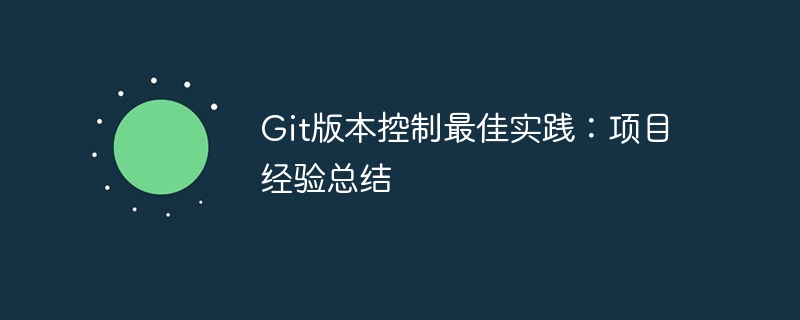

Git version control is an indispensable tool in modern software development. It is fast, powerful, and distributed, and can effectively help team collaboration and improve work efficiency. In long-term practice, I have summarized some best practices for Git version control, hoping to be helpful to everyone.
1. Reasonably plan the warehouse structure
Before creating the warehouse, we need to reasonably plan the warehouse structure. Generally speaking, we can divide branches according to the module, function and other dimensions of the project to better manage the code.
For example, we can create a develop branch for developing new features, a master branch for releasing stable versions, and other branches as needed. , such as feature branch, hotfix branch, etc. Through proper planning, we can better organize and manage the code.
2. Submit code in a timely manner
Submitting code in a timely manner is one of the basic principles of version control. After modifying the code, we should submit the changes in time to avoid code loss or conflicts caused by long-term unsubmission.
At the same time, it is recommended to use meaningful submission information to describe the specific changes of this submission. This way, we can more easily understand the differences between commits when we need to go back through code history later.
3. Frequently pull the latest code
In order to avoid code conflicts, we should frequently pull the latest code and update the local code in a timely manner. Before merging other people's code changes, we synchronize the local code with the remote code to minimize the possibility of conflicts.
At the same time, you can also use the git pull --rebase command to merge local submissions and remote code base submissions into a linear submission history. This way, we can keep the code history clean and clear.
4. Reasonable use of branches
Branch is one of the important features of Git. We can use branches to develop and test different functions. When using branches, we need to pay attention to the following points:
develop, master, feature, etc., while other temporary branches can be deleted in time. 5. Pay attention to the handling of code conflicts
In the process of multi-person collaborative development, code conflicts are inevitable. However, we can use some methods to reduce the occurrence of code conflicts and resolve conflicts efficiently.
git mergetool, etc., to assist in resolving conflicts. 6. Regular backups and remote warehouses
It is very important to regularly back up and push the code base to the remote warehouse. Through regular backups, we can prevent code loss and keep the project safe. Pushing the code base to the remote warehouse not only enables team collaboration, but also provides code backup and code history tracing.
Summary:
The above are some of the best practices I have summarized in the process of using Git. I hope they can help you better manage code and team collaboration. Of course, there are many more powerful functions of Git, which we can apply flexibly according to the needs of different projects. Whether it is individual development or team collaboration, proper use of Git version control tools will greatly improve work efficiency and maintain code stability and traceability.
The above is the detailed content of Git version control best practices: summary of project experience. For more information, please follow other related articles on the PHP Chinese website!




